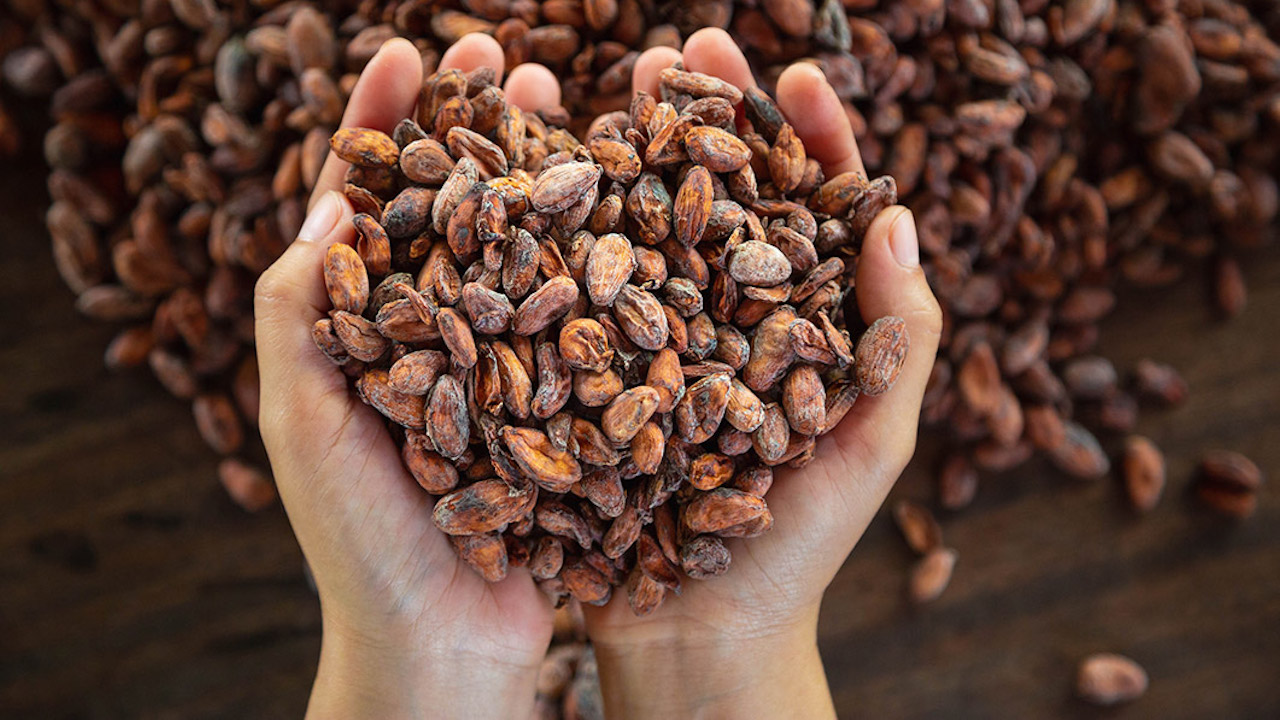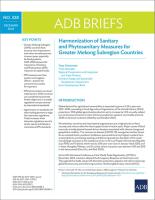
The Philippines' cacao output remains far below the target of 100,000 metric tons by 2022. Photo credit: iStock/Narong KHUEANKAEW.
The development of agricultural value chains can help turn cacao into a cash crop for farmers in the southern Philippines.
Valente Turtur thinks there is gold in cacao. He believes in the potential of cacao so much that he dreams of one day challenging Starbucks and starting a business built on chocolate.
“Why not?” he asks, noting chocolate’s popularity among Filipino consumers. He himself shuns coffee in favor of drinking cocoa made from tablea, chocolate disks made from 100% pure cacao beans.
Turtur, who is the president of the Cacao Industry Development Association Mindanao, Inc., has reason to be loyal to cacao.
Why cacao?
According to the Philippine Cacao Industry Roadmap 2017–2022, cacao production only requires a small startup capital. It is also one of the reasons the roadmap bet on the crop to help lift Filipino farmers from poverty.
Cacao also lives well with other crops. According to the roadmap, cacao can be intercropped with coconut and banana, giving farmers more income streams while keeping the soil healthy.
Among cacao’s selling points for Turtur is that it allows him to plant other crops in his farm in Davao City, said to be the cacao capital of the Philippines. The city accounts for 80% of the national output.
Turtur also likes that he could already harvest just 2 years after planting cacao seedlings because of the crop’s fast gestation period.
He decided to plant cacao to boost his income since it is considered as a high-value crop. Before cacao, he grew vegetables, which are highly perishable unlike cacao beans, which can be stored for several months if processed and dried properly.
There is currently a slump in demand for cacao because of the pandemic. However, Turtur expects demand to grow both locally and globally. Before the COVID-19 crisis, the world market for cacao was estimated at 5 million metric tons (MT) per year.
Low output
Despite cacao’s selling points as a crop, output in the Philippines has remained low and it is even a net importer.
Cacao output has been growing though not as fast as market demand. Data from the Philippine Statistics Authority show it increased to 8,500 metric tons from 6,000 MT between 2015 and 2019.
But Edwin Banquerigo, assistant regional director of the Philippines’ Department of Trade and Industry–Davao Region, says industry data puts local output at between 15,000 and 19,000 MT.
Still, this is far below the cacao roadmap target output of 100,000 MT by 2022.
Challenges
Several factors contribute to the low output.
“Cacao is the tree of love. It needs tender loving care. It’s not plant now, harvest later,” says Banquerigo. “Ignore it for just 2 weeks (and) it will die.”
“It’s not a lazy man’s crop. You have to visit the farm every day to take care of the trees. With banana or coconut, you only tend to them when it’s time to harvest,” says Turtur.
The cacao roadmap also blames the country’s wild weather patterns, pests and diseases, competition with other plantation crops, aging of cacao trees in major production areas, as well as social unrest, low investments in post-harvest facilities, and limited production inputs.
Turtur also cites the traditional farmers’ mindset as a challenge. “We have all the technology, but we’re also dealing with the mindset of Filipino farmers. They are very traditional. They grow their crops, they harvest, then sell. If there’s nothing to harvest, it’s okay. It will really take time for farmers to completely transform from being just a farmer to someone who runs the farm as an agribusiness.”
Rise of the processors
The country’s low cacao output has not stopped bean-to-bar company Auro Chocolate from setting up shop in 2015, joining chocolate makers, like Malagos Chocolate and Theo & Philo, which have bet big on chocolates made from locally grown cacao. All three source cacao beans from Mindanao and have bagged numerous international awards for their products.
Auro—a play on the Spanish word for gold, oro—officially launched the brand in 2017 when the Philippines was gaining recognition for growing specialty cacao. “The cacao varieties we have in the Philippines can compete with cacao varieties from other countries. We can really count ourselves among the best,” says Kelly Go, Auro co-founder and managing director.
Auro assures itself of good cacao beans by partnering with farmers and providing them with technology and know-how to ensure their cacao harvest are top-notch. The company also offers a premium price to farmers. “We pay 20%–50% above the global commodity price,” says Go. “This creates an incentive for farmers to really improve the quality of their cacao.”
Alben Enriquez, a Davao-based farmer, is happy with his partnership with Auro. He has been working with the company since 2016. “In Davao, Auro is the only one which gives a premium price for cacao beans,” he says, noting a 60% jump in income since he partnered with the company. The arrangement also ensures there is a buyer for his cacao beans.
RAPID Growth
Linking farmers with companies is at the heart of a government project to address rural poverty and unemployment.
Launched last year, the Rural Agro-enterprise Partnership for Inclusive Development and Growth (RAPID Growth) aims to link farmers with small businesses and create a value chain, where authorities first ensure there is a market for the produce even before farmers plant. The 4.7-billion-peso ($97.6 million) project is spearheaded by the Department of Trade and Industry and funded by the International Fund for Agricultural Development.
The project is different from other agri-based development programs since it focuses on a market-driven approach where micro, small, medium-sized enterprises are the entry point to develop the value chain from agricultural production to processing, distribution, and marketing. The project will primarily target four agricultural value chains—cacao, coffee, processed fruits and nuts, and coconut.
Banquerigo, the project director, says RAPID will address the challenges facing cacao farmers when it comes to productivity. “We improve productivity by teaching farmers about good agricultural practices and appropriate post-harvest protocols and providing them post-harvest facilities.”
Teaching farmers about the right protocols for drying and fermenting cacao beans, for instance, is needed, he notes. “Cacao can’t be like corn, which farmers just dry on the highway. That is why the highway in the Philippines is considered the longest dryer in the world because they dry their corn in the highway. You cannot do that for cacao. The dryer should be elevated because cacao would absorb any smell within its environment. That’s the characteristic of cacao. You need to take care of the beans.”
But for Banquerigo, the key to boosting the country’s cacao output is to provide farmers with seedlings that are high-yielding and pest-resistant. “If you want to prolong poverty, provide lousy seedlings.”
For its part, the Mindanao Development Authority (MinDA) partners with private sector groups, government agencies, and local government units to ensure support for value chains for the crop.
MinDA Development Management Officer Anelyn Binancilan says the agency also promotes investments in manufacturing and processing of cacao-based products. It also supports and participates in local and international investment promotions forums and exhibits, while liaising with potential investors.
Despite the challenges facing the industry, Turtur remains optimistic about the industry’s prospects. “There’s gold in cacao, yes, if you do it the right way… But if farmers process the beans, they will find more gold. Once you process it into tablea, your income will double. If you process it into a chocolate bar, your income will triple. There’s the gold.”
This article was first published by BIMP-EAGA on 1 December 2020.

BIMP-EAGA
The Brunei Darussalam–Indonesia–Malaysia–Philippines East ASEAN Growth Area, or BIMP-EAGA, is a cooperation initiative established in 1994 to spur development in remote and less developed areas in the four participating Southeast Asian countries.


